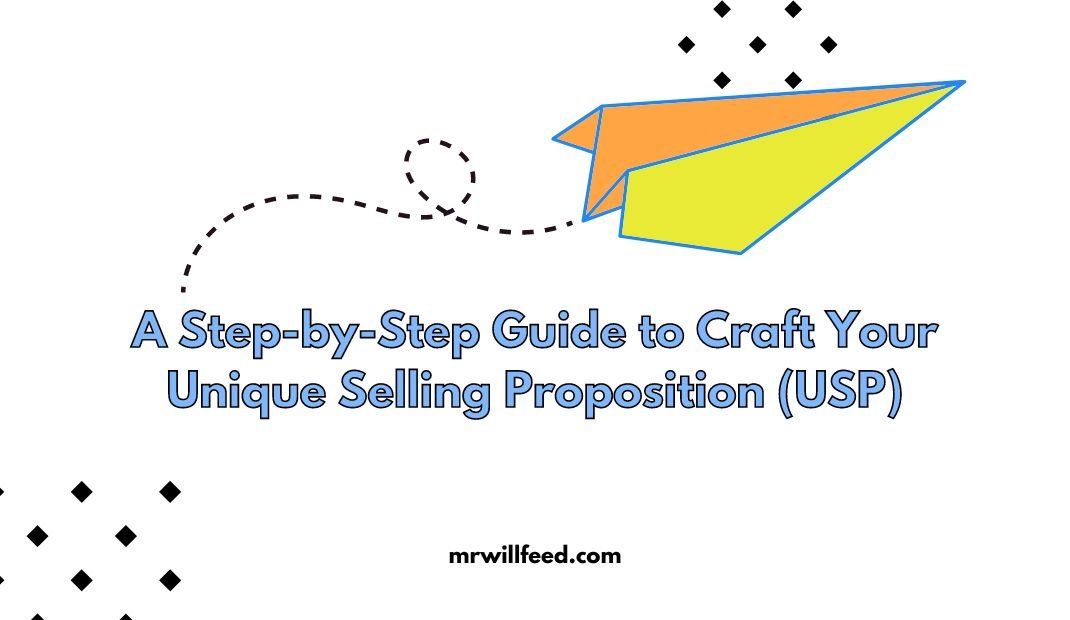Table of Contents
Unique Selling Proposition
Your Unique Selling Proposition (USP) is what sets your brand, product, or service apart from competitors. It’s the main reason why customers should choose you over someone else. Drafting a compelling USP requires clarity, simplicity, and a deep understanding of your audience.
In this article, I will walk you through a series of questions that will help you develop a powerful USP that demands your customer’s emotions, addresses their problems, and differentiates you in the marketplace.
I have Developed USP with kids’ printable worksheets as an example to make it easy for you to understand, read along, and perform the steps on the go.
Step 1: Identify the Problems You Solve
Start by listing all the problems your product, service, or brand can potentially solve for your target audience. The more specific you are, the better. Consider both functional and emotional challenges your customers face.
Examples:
- Problem: Lack of Daily Routine for Kids
- Parents struggle to balance educational activities with free play, leading to unstructured days for their children.
- Problem: Overwhelmed by Educational Resources
- Parents find it difficult to choose the right educational materials amidst an overwhelming array of options.
- Problem: Struggling to Find Productive Screen-Free Activities
- Parents need engaging, screen-free activities to keep their kids entertained and productive.
Step 2: Anticipate Objections
Next, list the objections your product or service might face from prospective clients. What might hold them back from purchasing or committing to your offer?
Example: “Parents might worry that the activity sheets won’t engage their children for long periods or that they won’t see tangible results.”
Step 3: Prioritize the Top 3 Problems and Objections
Narrow down to the top three problems you solve and the top three objections you need to overcome. This helps you focus on what truly matters to your audience.
Problems: Reduced screen time, improved focus, enhanced creativity.
Objections: Lack of long-term engagement, doubt about effectiveness, price concerns.
Step 4: Connect Problems and Objections
Research if the problems you solve can directly help you overcome objections. This will allow you to strengthen your messaging by addressing concerns head-on.
Example: “By providing engaging activities with printable worksheets we directly address the concern that children may lose interest quickly.”
Step 5: Appeal to Emotions
What emotion do your target clients most want to feel? Identify their dream or ideal state and how your product helps them get there.
Example: “Parents want to feel confident that their children are growing and learning in a balanced way.”
Step 6: Establish Exclusivity
How are you different from your competitors? What is your “only” factor? Focus on making your audience feel special or exclusive by choosing your product.
Example: “We’re the only activity sheet provider focused on blending creativity, education, and screen-free entertainment in one.”
Step 7: Craft Your USP in One Sentence
Now, combine your insights to create a clear and compelling USP. Your USP should include a power phrase, a prime benefit, and an enabler phrase.
Example: “Our engaging activity sheets provide screen-free, educational entertainment for children, helping them grow creatively while giving parents peace of mind.”
Step 8: Create a Power Phrase
What phrase differentiates you from competitors? This can be a descriptive or action phrase that highlights what makes you first, best, or only at something.
- Example: “The only activity sheets that make learning fun while significantly reducing screen time.”
Step 9: Identify Your Prime Benefit
What is the most emotionally satisfying benefit your product or service provides? This is typically the one that solves a deeper emotional problem beyond just the functional one.
- Example: “Parents can trust that their kids are developing important skills while enjoying themselves.”
Step 10: Add an Enabler Phrase
This phrase connects to the technical benefit your customer thinks they need. It ties your USP to their big dream or end goal and positions your product as the vehicle to achieve that.
- Example: “Our worksheets allow kids to explore their creativity and problem-solving skills, laying the foundation for lifelong learning.”
Step 11: Reassess Your USP
With all the components in place, write your USP in one sentence. Is it clear and compelling? Does it effectively communicate why someone should buy from you over other options?
- Revised USP: “Our activity sheets are the only resource that makes learning fun and screen-free while helping children develop key skills, giving parents peace of mind.”
Step 12: Build Credibility
Finally, reinforce your USP with credibility elements. Consider factors like exclusivity, exposure, reputation, seniority, innovation, and associations. These will help build trust with your audience.
- Example: “We’ve been featured in parenting magazines, have over 3,000 satisfied families, and offer a satisfaction guarantee.”
Step 13: Test and Refine Your USP
Compare different versions of your USP and gather feedback from customers, strangers, and colleagues. Which one resonates the most? Continuously refine your USP based on real-world data, such as conversions and click-through rates from ads and landing pages.
Your USP is not static—it should evolve with your business and market. By staying flexible and testing different versions, you can find the most compelling way to differentiate your brand and attract loyal customers. You can involve positive brand strategy or against story to get loyal followers.

One thought on “Crafting Your Unique Selling Proposition (USP): A Step-by-Step Guide”